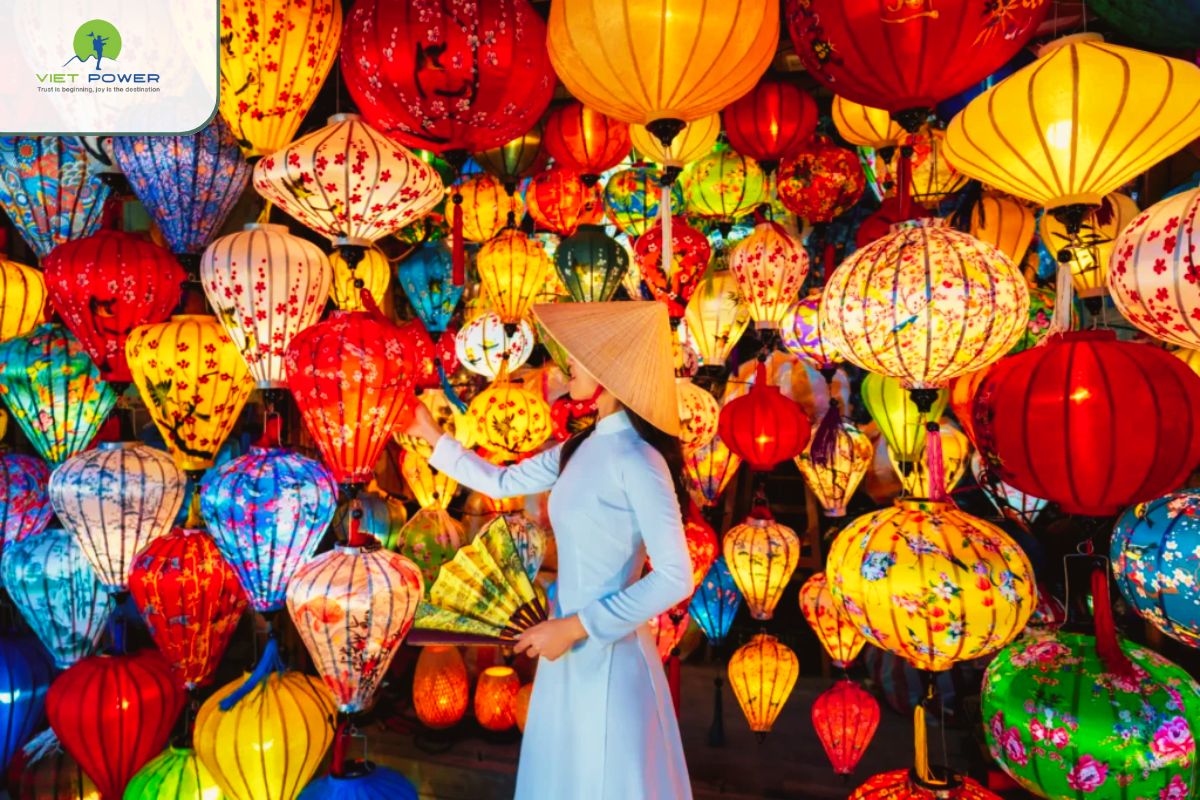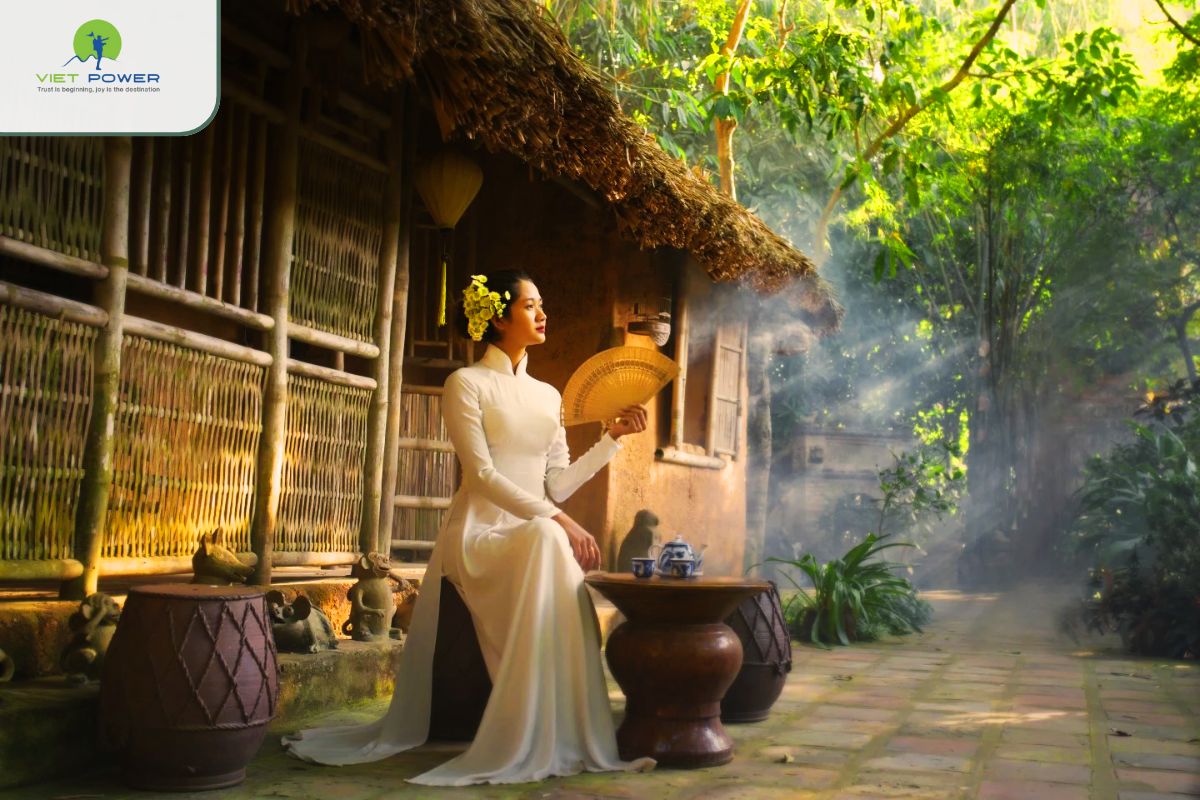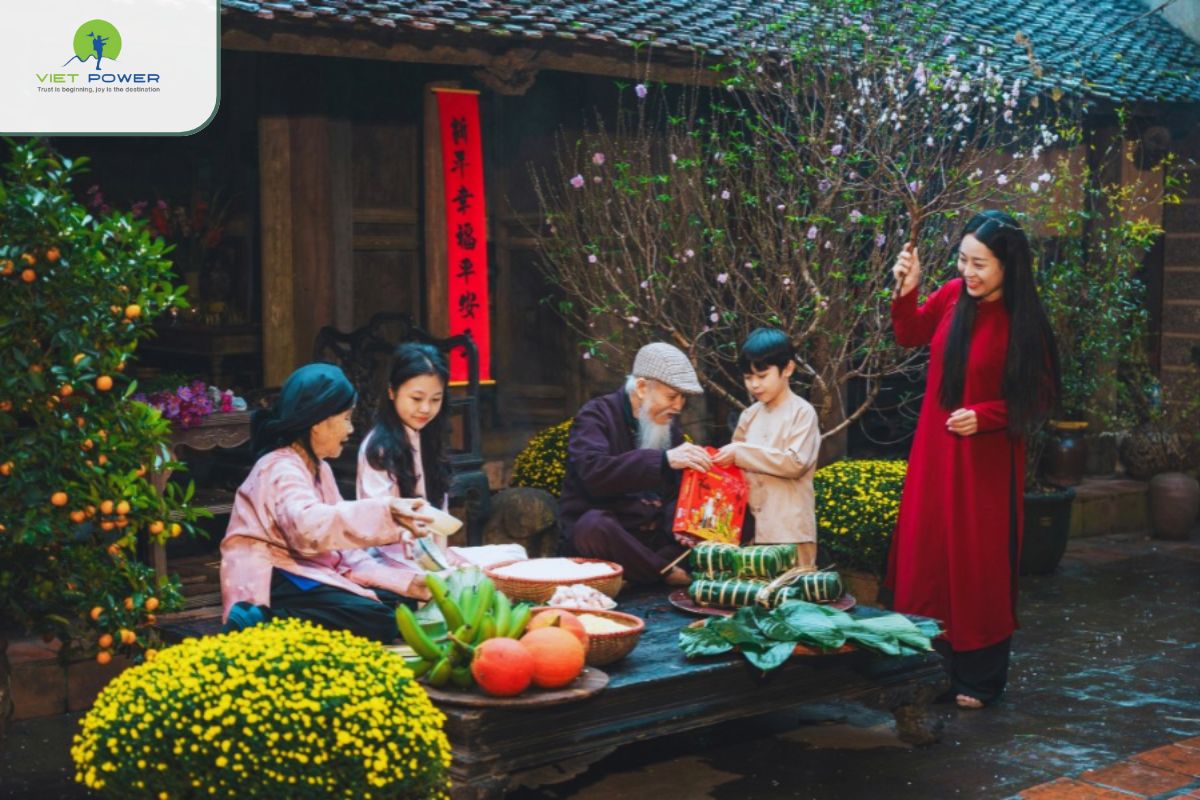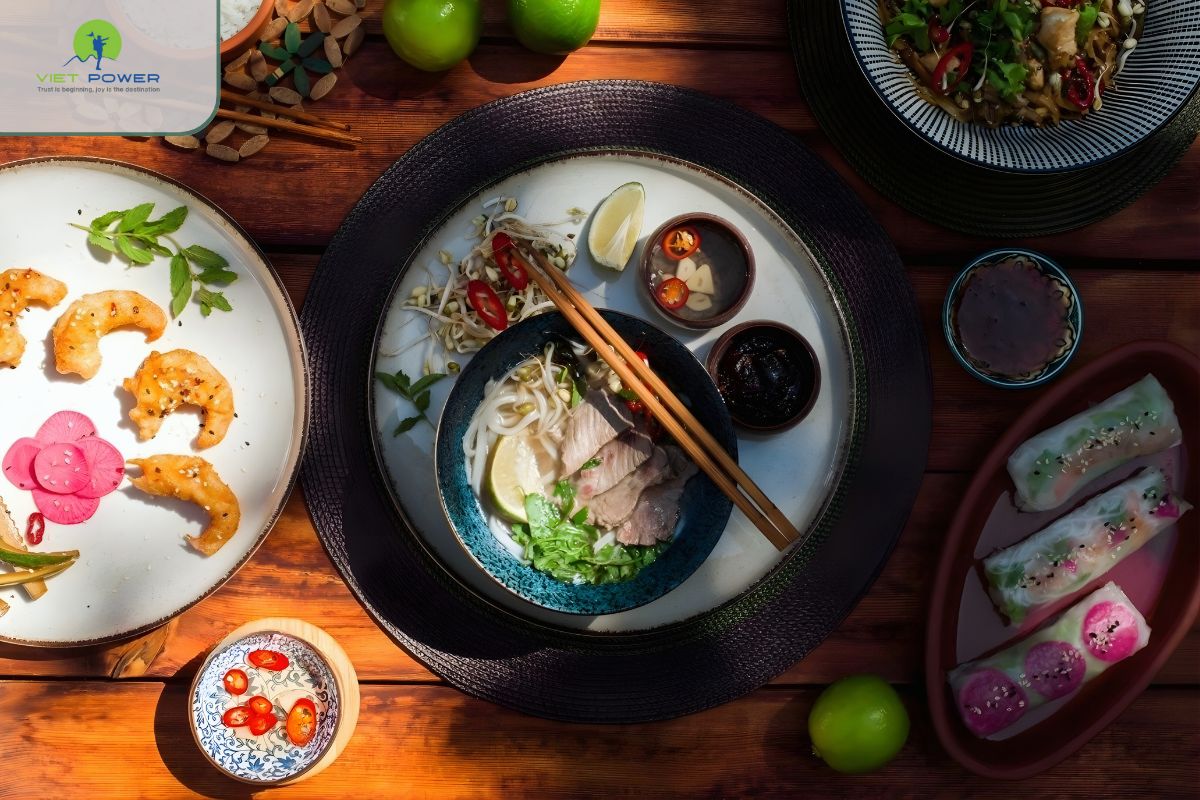Vietnam is a land of quiet grace and endless warmth. After the rain, the scent of lotus fills the air, children laugh by the rice fields, and scooters hum through the dawn. Here, the old and new live in harmony. In Vietnamese culture, grace lies in simple daily life, from family love and joyful festivals to flavorful cuisine and lasting faith. Discover more with Vietpower Travel about the traditions that keep Vietnam’s soul alive.
To speak of Vietnam is to speak of “harmony”, a word that lives in our homes, our hearts, and our daily life. For us, harmony means balance, between people and nature, past and present, duty and joy. It is seen in the way a farmer greets the dawn, a child bows to their elder, or a monk’s bell echoes across the misty hills of dawn.
The roots of Vietnamese culture begin with our ancestors, whose spirit and wisdom still guide us until this day. Their respect for family, community, and the land shaped the foundation of our values. Over centuries, these beliefs blended with Confucian thought, Buddhist serenity, and a deep love for nature. Confucianism taught respect and family order. Buddhism nurtured compassion and mindfulness. From rivers, mountains, and fertile fields, we learned humility and the art of living in balance with nature.

Our history was not without struggle. From colonization to wars of independence, the Vietnamese spirit was tested yet never broken. Each generation rose again with quiet strength, rebuilding with forgiveness and faith.
Today, our culture stands as a river that has flowed through hardship and renewal, always calm, resilient, and full of life. Let us discover how this balance and harmony live within our family bonds, social customs, and spiritual beliefs.
At the heart of Vietnamese culture lies the family, not just a household, but a sacred bond connecting generations. Respect for elders is a timeless value; parents and grandparents are honored for their wisdom and sacrifice.
Every Vietnamese home has an ancestor altar with incense and offerings, a bridge between the living and the departed. During Tet, families return to their hometowns, light the first incense of the year, and invite their ancestors to join the celebration.
For travelers, visiting Vietnam during Tet, usually in late January or February, offers an unforgettable glimpse into this deep-rooted family culture. Streets in Hanoi, Hue, and Ho Chi Minh City glow with red lanterns, markets overflow with kumquat trees and flowers, and families gather to share Banh Chung - square sticky rice cake.
Travel tip:
Through these experiences, travelers can feel the warmth that defines Vietnamese life, where love, respect, and memory unite generations.
No symbol captures the elegance of Vietnamese culture quite like the Ao Dai. Flowing yet form-fitting, modest yet graceful, it reflects the delicate beauty of Vietnamese womanhood, confident, refined, and timeless.
The Ao Dai is more than clothing; it is poetry stitched in silk. Its slender form follows the curves of our land, the winding rivers and gentle hills that shape Vietnam’s soul. Each color carries meaning: white for purity, red for luck, blue for calm, and gold for prosperity.
Across the regions, styles vary with life’s rhythm. In the North, women favor soft tones of white or pastel, reflecting Hanoi’s quiet elegance. In the South, bright pinks, yellows, and vivid patterns bloom with joy and openness.

Travel experiences in Hue:
To see an Ao Dai flutter in the wind is to witness the living spirit of Vietnam, resilient yet soft, traditional yet modern. It is a symbol of the harmony between people and nature, where beauty flows as naturally as the rivers that run through our homeland.
Vietnamese weddings are not only about love but also about family unity and respect for ancestors. Beneath the red veil, the color of prosperity and joy, couples bow before the family altar in a tea ceremony, offering gratitude to parents and ancestors.
For travelers, witnessing or even joining in the joy of a Vietnamese wedding is a heartwarming cultural encounter.
In northern villages near Hanoi or the Mekong Delta, traditional weddings still unfold in vibrant tents filled with laughter, folk songs, and shared feasts. In Hue or Hoi An, modern ceremonies blend tradition with elegance, a tea ceremony at dawn, followed by a Western-style banquet under lantern lights.
Travel tip:
Through these moments, travelers discover how Vietnamese love stories are also stories of heritage, a harmony of hearts and history.
Festivals are when Vietnam’s spirit shines brightest. Each season carries a different rhythm, a celebration of joy, gratitude, and community.
Tet is the most important holiday, a time of renewal and reunion. Streets glow in red and gold, and the air fills with the fragrance of blooming peach and apricot blossoms.
Best places to experience Tet:

Mid-Autumn Festival (Tet Trung Thu)
In September, the night sky glows with lanterns as children sing and parade through the streets.
Where to go:
These festivals remind travelers that Vietnamese joy is communal, a dance of gratitude and togetherness under lantern-filled skies.
To taste Vietnamese food is to taste harmony itself. Each dish balances the five elements, spicy, sour, bitter, salty, and sweet, and the yin-yang of flavors.
In Hanoi, cuisine reflects elegance and restraint. Try a steaming bowl of pho at dawn, or bun cha grilled pork with herbs. Visit Dong Xuan Market to sample street delicacies like nem cua be (crab spring rolls).
In Hue, food carries the legacy of royal kitchens, refined, colorful, and beautifully arranged. Don’t miss bun bo Hue (spicy beef noodle soup) or banh beo (steamed rice cakes with shrimp).
Visit Hue Imperial Cuisine Restaurants for a taste of ancient recipes once served to emperors.

In Ho Chi Minh City, flavors are vibrant and bold. Try com tam (broken rice), goi cuon (fresh spring rolls), or a cup of Vietnamese iced coffee at Ben Thanh Market.
Travel tip:
Join a food tour in Hanoi or Saigon, or take a cooking class in Hoi An, where you can visit a local market, pick fresh herbs, and learn to balance Vietnamese flavors.
Yet beyond taste, Vietnamese cuisine is emotional, a language of love spoken through food. A bowl of soup prepared by a mother, a shared plate among friends, a market vendor’s morning smile, these are the moments that flavor our lives. In every bite, there is a story of home.
Faith in Vietnam is not loud; it is a whisper carried in the wind, a quiet bow before the altar, a simple act of gratitude.
In Vietnamese religion, harmony again reigns. Buddhism, Confucianism, Taoism, Catholicism, and folk beliefs coexist not in conflict but in balance. A family may attend a Buddhist temple, celebrate a Catholic Christmas, and still light incense to honor ancestors, all expressions of the same deep respect for the sacred.
Temples and pagodas are places of calm refuge, where incense curls toward heaven and bells echo across the mountains. Yet spirituality also lives in our homes, in the morning offering of fruit, the bow before an ancestor’s portrait, or the wish whispered under the breath before a journey.
.jpg)
Where to experience Vietnamese spirituality:
Faith, for us, is not confined to ritual. It is found in kindness, gratitude, and the belief that our lives are part of something greater, a connection between heaven and earth, past and future, seen and unseen.
Vietnamese culture is not frozen in time, it is a living song, flowing through every smile, flavor, and melody.
You’ll find it in children’s laughter echoing through rice paddies, in the scent of street food rising at dusk, in the rhythm of drums during festivals, and in the quiet prayers whispered at dawn.
To travel through Vietnam is to join that eternal rhythm, to see how the people have turned resilience into grace and simplicity into beauty.
As the sun sets over Ha Long Bay or the waves hum along Mui Ne’s coast, you will understand why the Vietnamese soul is said to sing in every heartbeat, calm yet passionate, humble yet proud, ever flowing like a river that carries both memory and hope.